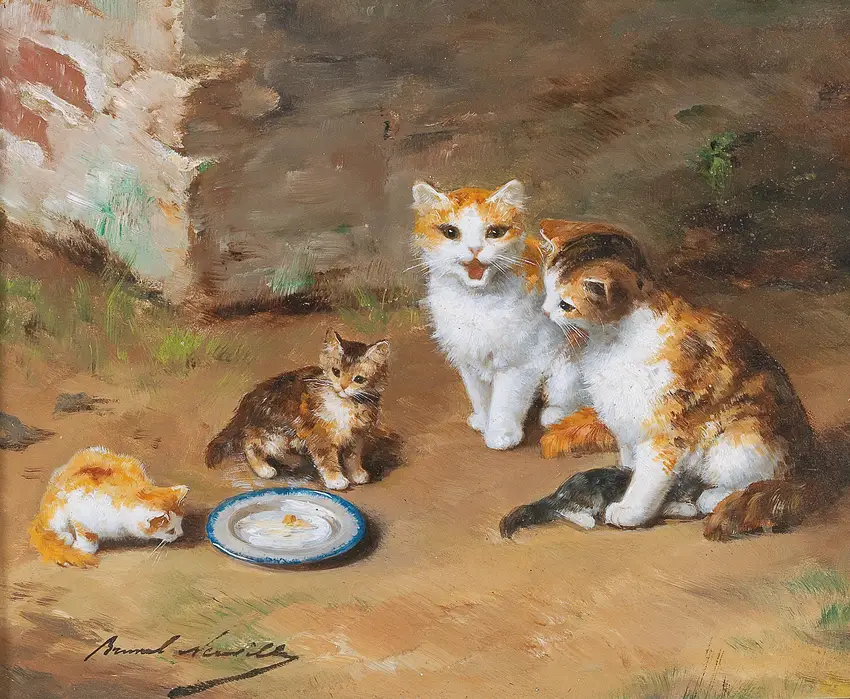Arthur-Alfred Brunel de Neuville
Arthur-Alfred Brunel de Neuville (1852–1941), French, Though not a household name today, this French painter carved out a niche with his meticulously detailed still lifes, particularly of flowers and fruit. Working during a period of artistic upheaval—when Impressionism and Post-Impressionism were rewriting the rules—he clung to a more traditional, almost academic approach. His compositions exude a quiet precision, each petal and leaf rendered with near-botanical accuracy, yet softened by a warmth of color that keeps them from feeling sterile.
Market scenes and floral arrangements dominated his output, often bathed in diffused light that suggests an intimacy with his subjects. Unlike the bold, expressive strokes of his avant-garde contemporaries, his technique was deliberate, almost reverent, as if capturing the fleeting beauty of blooms was an act of preservation. Critics of the time might have dismissed such work as old-fashioned, but there’s an undeniable mastery in the way he balanced texture and shadow, making even the humblest bunch of grapes feel luminous.
While overshadowed by flashier movements, his paintings found admirers among collectors who prized technical skill and tranquility over radical innovation. Today, they offer a window into a quieter corner of 19th-century art—one where craftsmanship and quiet observation held sway.
Market scenes and floral arrangements dominated his output, often bathed in diffused light that suggests an intimacy with his subjects. Unlike the bold, expressive strokes of his avant-garde contemporaries, his technique was deliberate, almost reverent, as if capturing the fleeting beauty of blooms was an act of preservation. Critics of the time might have dismissed such work as old-fashioned, but there’s an undeniable mastery in the way he balanced texture and shadow, making even the humblest bunch of grapes feel luminous.
While overshadowed by flashier movements, his paintings found admirers among collectors who prized technical skill and tranquility over radical innovation. Today, they offer a window into a quieter corner of 19th-century art—one where craftsmanship and quiet observation held sway.
-

Cat Family
Arthur-Alfred Brunel de Neuville (French, 1852–1941)A charming portrayal of feline camaraderie, where playful kittens and watchful elders share a sunlit moment brimming with texture and warmth.
